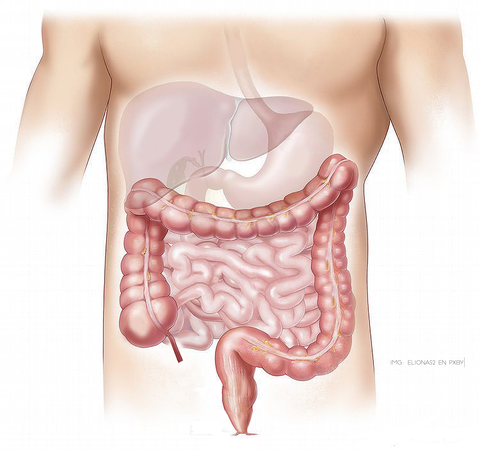
How to combat seasonal allergies
Share
Pollen allergies are caused by pollen, which is made up of tiny, egg-shaped grains of dust shed by flowering plants. Pollen is carried by the wind, bees and other insects from one plant to another to perform its essential reproductive function. This is part of the natural cycles for life on earth to continue, however, when different types of pollen fly through the air, they can often, and especially in places where there are seasons, land in eyes, nose, lungs and skin.
Spring allergies are often caused by trees, primarily oak, olive, elm, birch, ash, walnut, poplar, sycamore, maple, cypress and pecan trees.
Late summer and fall pollen allergies are often caused by weed pollen. Again, these allergies may depend on your location.
Additionally, if you travel to another country or continent, you may notice that some allergies disappear or new ones appear, depending on the season and the type of plants and pollens in the area.
However, some allergies are not caused by pollen, but by indoor molds, dust mites, pet dander, or cockroaches. This is why it is important to know the cause of your allergies so you can prevent them. Today we will focus on seasonal pollen allergies.
Symptoms of pollen allergies

Although some of the most common problems caused by pollen allergies are sneezing, runny nose, and coughing, they can lead to a variety of other symptoms. Symptoms of pollen allergies may also include:
Sinus congestion, watery or itchy eyes, red eyes, itchy throat, cough, wheezing, itchy skin, and even hives, stomach pain, fatigue and irritability.
How the immune system reacts to pollen allergies

Any pollen allergy is linked to your immune system. When your immune system is out of balance, it can lead to pollen allergies or other types of allergies. This can happen from any bodily stressor that interferes with the healthy function and natural strength of your immune system.
According to an article by Dr. David Jockers, if you have experienced environmental problems early in your life, your body may not be able to develop a natural immune response to certain pollen or other things and make you prone to allergic reactions. However, if you experience an immune condition later in life, it can wreak havoc on your immune system and lead to allergic reactions when you are older.
What organs make up your immune system?
The first line of defense of the human body is the skin and mucous membranes , which act as physical barriers.
The bulk of the defense system is made up of the lymphatic system
The lymphatic system includes lymph nodes, which are small, bean-shaped tissues that lie along the lymphatic vessels. Lymph nodes act as filters. Various immune system cells trap germs in the lymph nodes and trigger the creation of special antibodies in the blood. Swollen or tender lymph nodes are a sign that the immune system is overactive, for example to fight an infection.
The endocrine system with the special role of the thymus gland
Special types of immune system cells called thymus lymphocytes (T cells) mature in the thymus. Among other tasks, these cells coordinate the processes of the innate and adaptive immune systems. T cells travel throughout the body and constantly monitor the surface of all cells for changes.
The Spleen
The spleen is located in the upper left part of the abdomen, below the diaphragm, and is responsible for different types of tasks:
- It stores various immune system cells. When they are needed, they travel through the blood to other organs. Scavenger cells (phagocytes) in the spleen act as a filter for germs that enter the bloodstream.
- Breaks down red blood cells (erythrocytes).
- It stores and breaks down platelets (thrombocytes), which are responsible, among other things, for blood clotting.
Tonsils
The tonsils are also part of the immune system. Because of their location in the throat and palate, they can prevent germs from entering the body through the mouth or nose. The tonsils also contain many white blood cells, which are responsible for removing germs. There are different types of tonsils: the palatine tonsils, the adenoids, and the lingual tonsil. All of these tonsillar structures together are sometimes called Waldeyer's ring, as they form a ring around the opening of the throat from the mouth and nose.
There is also lymphatic tissue on the side of the throat, which can take over the functions of the palatine tonsils if they are removed.
Bone marrow
Bone marrow is a sponge-like tissue inside bones. This is where most immune system cells are produced and multiply. These cells travel to other organs and tissues through the blood. At birth, many bones contain red bone marrow, which actively creates immune system cells. Throughout our lives, more and more red bone marrow is converted into fatty tissue. In adulthood, only a few bones still contain red bone marrow, such as the ribs, breastbone, and pelvis.
The intestine
The intestine plays a key role in defending the body against germs: More than half of all antibody-producing cells in the body are located in the intestinal wall, especially in the last part of the small intestine and in the appendix. These cells detect foreign substances, mark them and destroy them. They also store information about the substances so that they can react more quickly next time. The large intestine also contains harmless bacteria called gastrointestinal or intestinal flora. A healthy intestinal flora makes it difficult for germs to spread and enter the body.
The key to counteracting seasonal allergies may lie in a well-balanced immune response

You may find it strange that allergies can have a relationship with your digestive health, but the truth is that an altered and unbalanced intestinal flora can very easily make you vulnerable to allergies or increase your symptoms.
In fact, the gut microbiome is responsible for 70% of the body's innate immune response and allows the body to differentiate between what are known as safe environmental particles , such as pollen, weeds, and dust, and unsafe environmental particles , such as bad bacteria, viruses, and unhealthy yeast.
If the gut flora is disrupted at a young age, immune uncoupling and hypersensitivity to safe environmental particles can occur. This can not only increase the risk of pollen and other seasonal allergies, but also the risk of asthma, autoimmune diseases and chronic inflammation, according to Jockers.
The role of histamine
Histamine is an important neurotransmitter and immune messenger molecule. It is essential for the proper functioning of the body. It is involved in processes such as inflammatory response and communication with the brain. Histamine receptors are found throughout the body, including smooth muscle and endothelial cells, the intestines, and the central nervous system.
Although histamine is essential and plays a very important role in your health, it is important to have enough histamine, but not too much. Histamine intolerance means that your body has too much histamine.
Histamine intolerance can also affect the entire body, including the lungs, intestines, brain, heart, and hormones. It can cause a variety of problems, including digestive problems, sleep disorders, bladder problems, anxiety, headaches, and skin problems. Pollen and seasonal allergies are some of the signs of histamine intolerance.
Natural adjuvants to counteract pollen allergies
Lifestyle plays a key role in how the immune system acts and responds to the environment. To reduce your exposure to things that trigger your allergy signs and symptoms (allergens):
- Stay indoors on dry, windy days. The best time to go outside is after a good rain, which helps wash pollen out of the air.
- Avoid mowing the lawn, weeding, and other gardening tasks that stir up allergens.
- Remove any clothing you have been wearing and shower to remove pollen from your skin and hair.
- Do not hang clothes outdoors: pollen can stick to sheets and towels.
- Wear a face mask if you are working outdoors.
Anti-inflammatory foods recommended to prevent and/or mitigate seasonal allergies
- Filtered water and in sufficient quantities
- Eat nutrient-dense anti-inflammatory foods such as leafy greens, kale, spinach, collard greens and chard, and vegetables such as cucumber, celery and asparagus.
- Low glycemic fruits, such as lemon, lime and berries, herbs.
- Spices, such as turmeric, ginger, mint, rosemary and oregano,
- Healthy fats, such as avocado, coconut oil, extra virgin olive oil and organic butter or ghee.
- Complete organic and good quality proteins.
- Fermented foods, such as sauerkraut, kimchi, and kefir.
Supplements that help you prevent or control allergies
- Probiotics. Probiotics play an important role in the microbiome and immune stability. Studies have shown that probiotics can help reduce allergy symptoms, providing much relief to people who use them.
- Allergic rhinitis – which you may know as seasonal allergies or hay fever – is a group of conditions characterised by inflammation of the nasal passages. It can also be caused by other things you are not allergic to, such as dust mites and animal dander.
Symptoms typically include itchy, watery eyes, sneezing, and a runny nose. Spirulina is well documented to help combat inflammatory reactions, such as seasonal allergies, by blocking histamines.
- Vitamin D3: Vitamin D3 is crucial for the body's immune function. Low levels of vitamin D3 are associated with chronic inflammation and allergies. Ideally, you should get regular sun exposure, but if this is not possible, you can use infrared light therapy. Or take a vitamin D3 supplement with K2, at least 5-6,000 IU per day.
- Omega-3: Omega-3 oils can be very useful in reducing allergies due to their powerful anti-inflammatory effect, as they have a systemic effect on the body and can reduce both allergic and cardiovascular inflammation.
- Vitamin C: Vitamin C is a powerful antioxidant that can dramatically reduce allergy symptoms such as hay fever and asthma. You can get vitamin C from citrus fruits, Brussels sprouts, broccoli, tomatoes and cantaloupe.
- Nettle leaf: Nettle is known to regulate a variety of inflammatory actions such as that of histamine.
